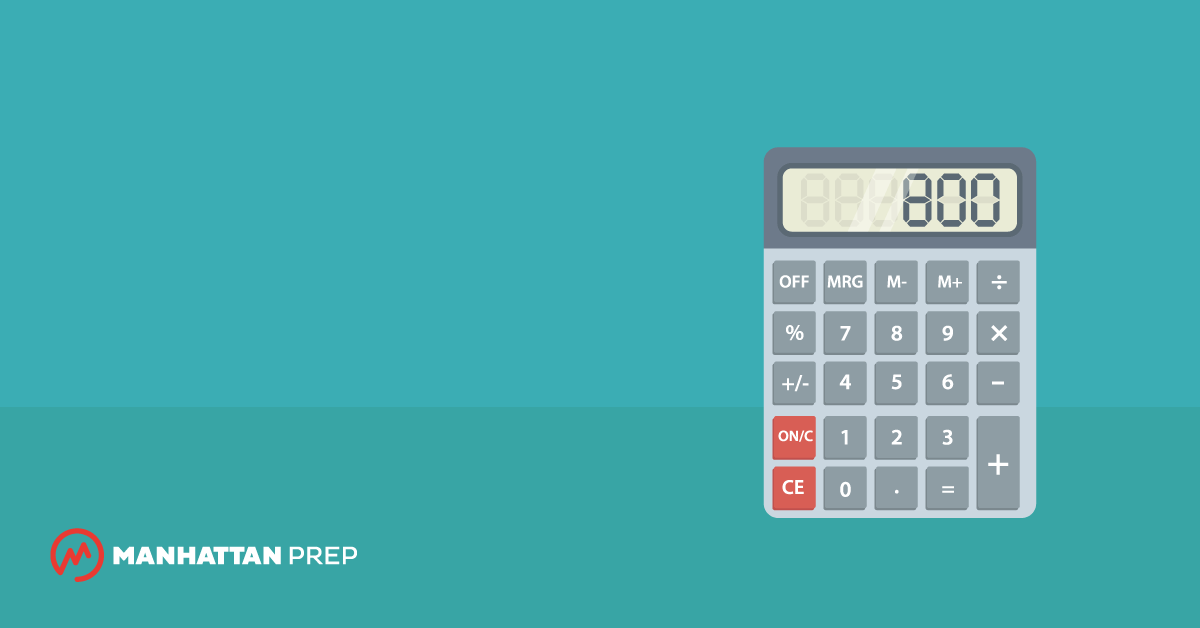Manhattan Prep’s GMAT Score Calculator: What Quant and Verbal Scores Will Result in a 700+ Score?

Did you know that you can attend the first session of any of our online or in-person GMAT courses absolutely free? We’re not kidding! Check out our upcoming courses here.
The three-digit Total GMAT score is calculated from your performance on the Quant and Verbal sections of the test. The actual algorithm isn’t disclosed—but we’ve been able to “backwards engineer” the process via a lot of official score research, leading to our GMAT Score Calculator tool. (Thank you to all of our students who shared their official test score reports!)
You can use the Manhattan Prep GMAT Score Calculator to figure out approximately what you need to reach on the Quant and Verbal sections in order to hit your goal score.
Here’s why the word approximately has to be in the previous sentence:
Any pair of Quant+Verbal subscores can map to up to three different Total scores.
If you want to understand why, read the next section; if you want to just take my word for it, feel free to jump to the section after the next one.
Pairs of Subscores Map to Multiple Total Scores
Most people are very surprised to learn that any pair of Q+V subscores can map to up to three different Total scores. For example, the pairing V41, Q49 can map to a 720, 730, or 740! What’s going on?
Each section of the test has what’s called a raw score. The Quant raw score determines your Quant subscore, the Verbal raw score determines your Verbal subscore—and the two raw scores (not subscores!) are used to calculate your Total score.
You can score between 6 and 51 on the Quant section, for a total of 46 different subscores. The same is true on the Verbal section.
The Total score ranges from 200 to 800—there are 71 different scores in that range. Since there are more possible Total scores, it has to be the case that some pairs of subscores can map to more than one Total score.
From the research we’ve done, it seems to be the case that any pair of subscores can map to 2 or 3 different Total scores.
So What Do I Need to Get My Goal Score?
Let’s say that your goal score is a 690. Plug that number into the GMAT Score Calculator to see what score combos will probably allow someone to reach that score. (Note: depending on your screen size, you may need to scroll to see all of the highlighted score combos.)
Let’s say that your last CAT score was 640, with subscores Q40, V38. (Note: These scores show that Verbal is your stronger area, even though Q is the higher number. V38 is currently the 85th percentile, while Q40 is the 41st percentile.)
A lot of people would look at that score pairing and think, okay, V is looking good! But I really need to bring Q up, so I’m going to study mostly Q from now on.
Hang on a second. Look at the chart.
If you don’t improve V at all, then you’d need to improve Q to ~46 in order to hit 690. You are planning to get all of your desired score improvement from your weaker area.
(The flip side: If you don’t improve Q at all, you’d need to improve V to ~45 in order to hit 690. V45 is the 99th percentile—that’s a tall order.)
It’s not a good idea to rely on just one of the two sections for all or most of your improvement. Set goals to improve both sections.
For instance, if you improve both sections by 3 points each (to Q43 and V41), you have a good chance to hit your 690 goal.
Your score could be a 680, though, due to the factors discussed in the previous section. So if you really want that 690 and a 680 just won’t cut it, set your sights a little higher, just in case. If you aim for a Q44, V42, your underlying raw score should get you at least to 690—and who knows? You might just hit that elusive 700!
The Big Picture: Set Goals for Both Q and V and Give Yourself a Little Leeway
Realistically, most people need to improve both Quant and Verbal to hit their goal score. But it’s often the case that we see people focus primarily on one area. Relying almost entirely on your weaker area to get you to your goal is not a good idea!
Use the GMAT Score Calculator to prove that to yourself. Set goals for both Quant and Verbal. Also, think about whether you want to set your sights a little bit higher to give you some leeway in case you fall a little bit short on test day. ?
Can’t get enough of Stacey’s GMAT mastery? Attend the first session of one of her upcoming GMAT courses absolutely free, no strings attached. Seriously.
 Stacey Koprince is a Manhattan Prep instructor based in Montreal, Canada and Los Angeles, California. Stacey has been teaching the GMAT, GRE, and LSAT for more than 15 years and is one of the most well-known instructors in the industry. Stacey loves to teach and is absolutely fascinated by standardized tests. Check out Stacey’s upcoming GMAT courses here.
Stacey Koprince is a Manhattan Prep instructor based in Montreal, Canada and Los Angeles, California. Stacey has been teaching the GMAT, GRE, and LSAT for more than 15 years and is one of the most well-known instructors in the industry. Stacey loves to teach and is absolutely fascinated by standardized tests. Check out Stacey’s upcoming GMAT courses here.